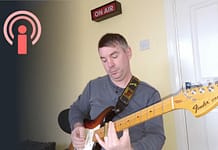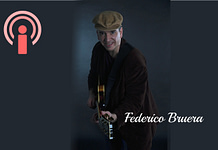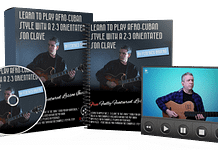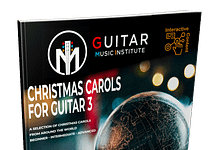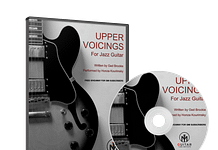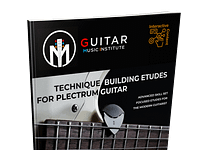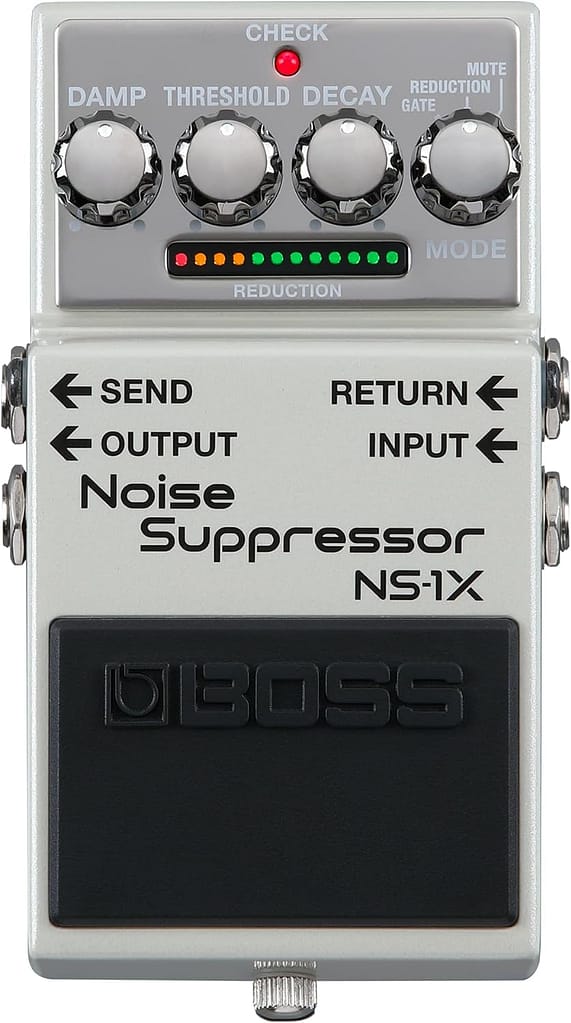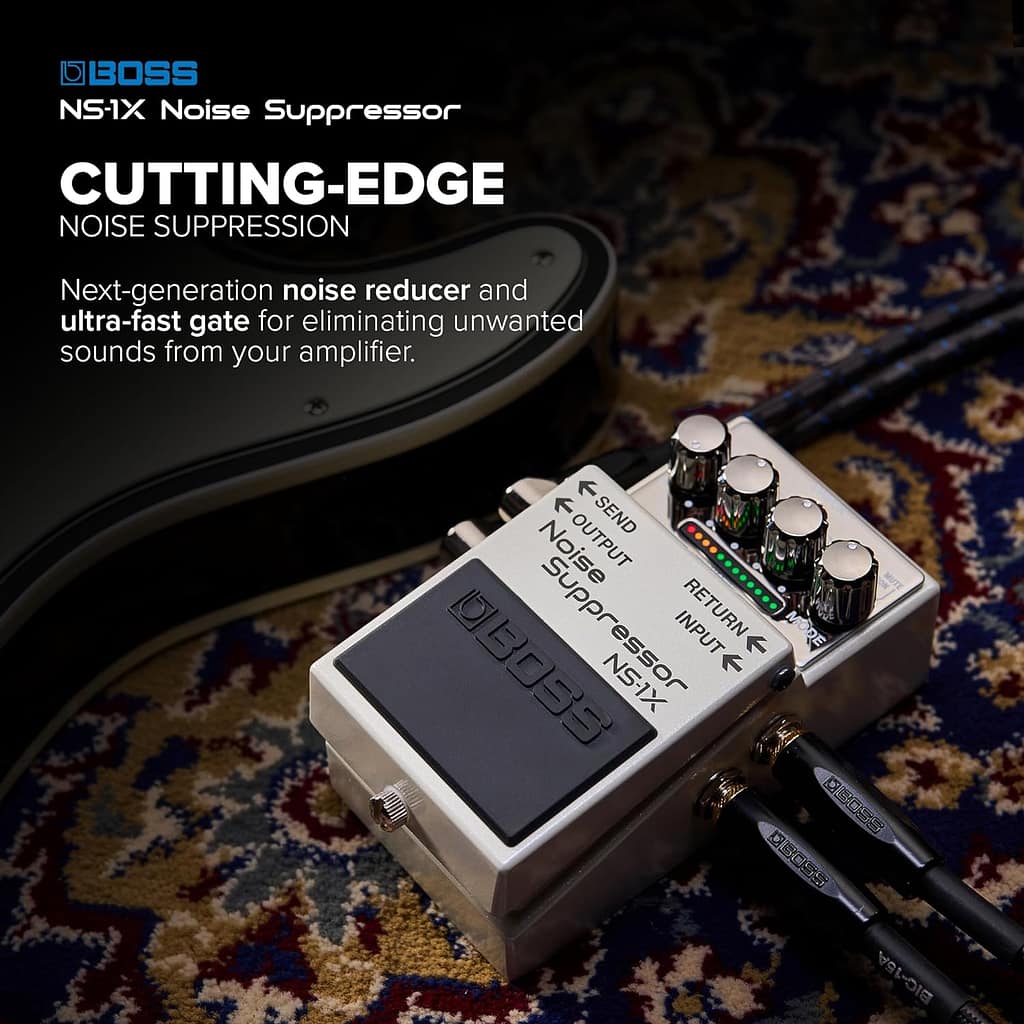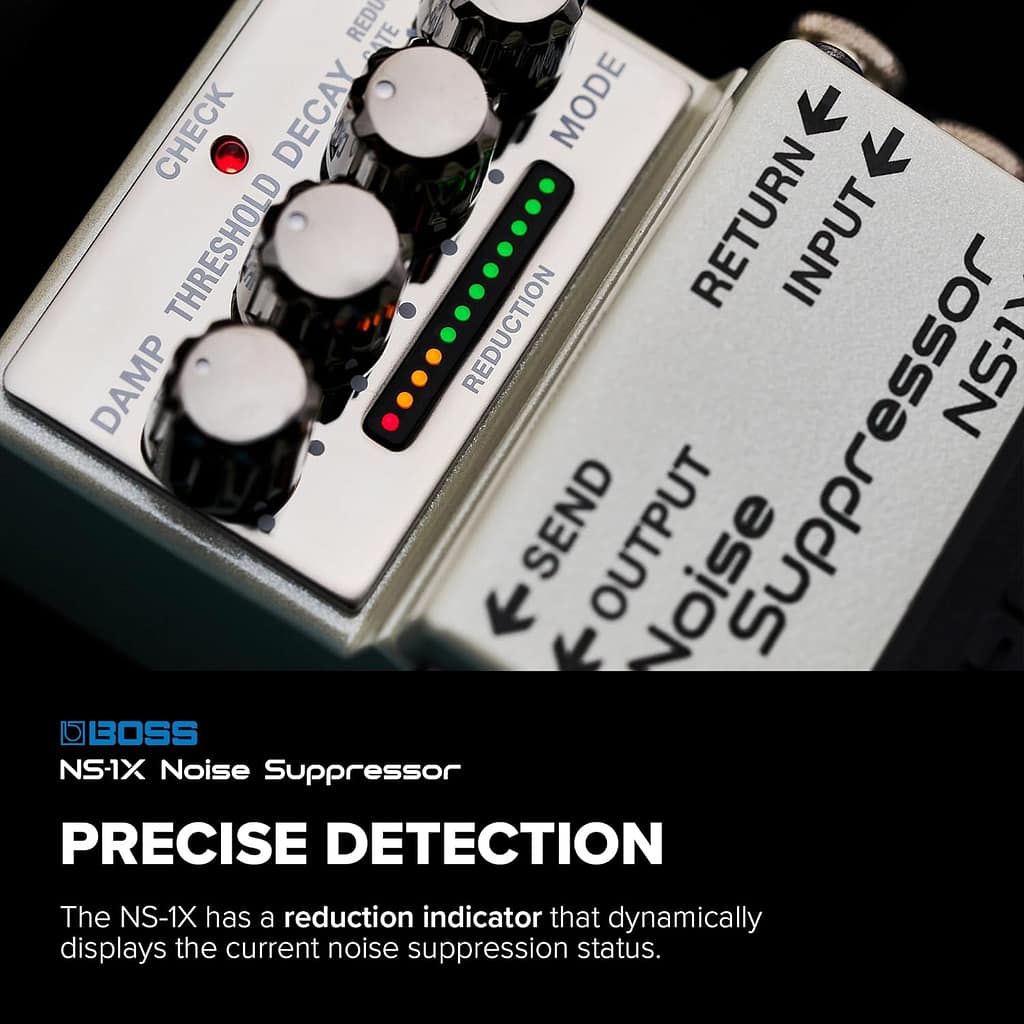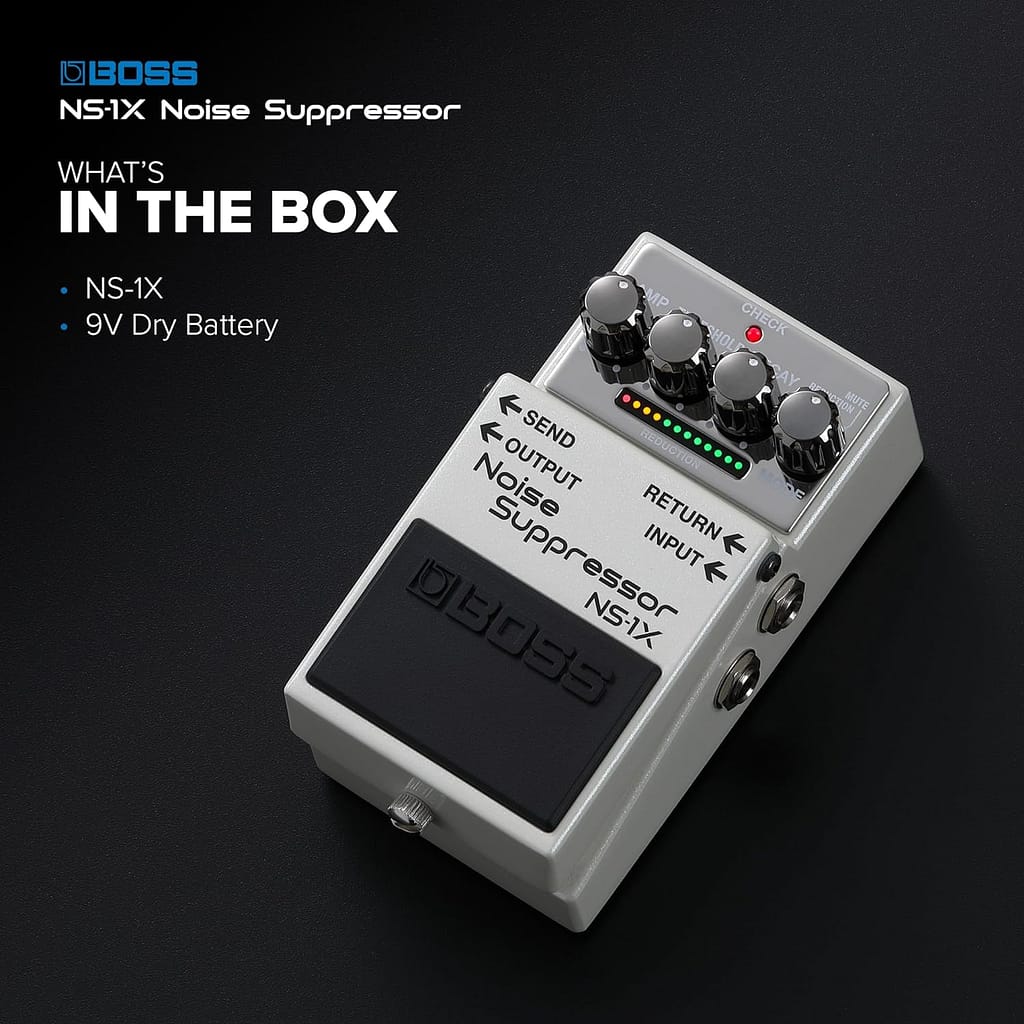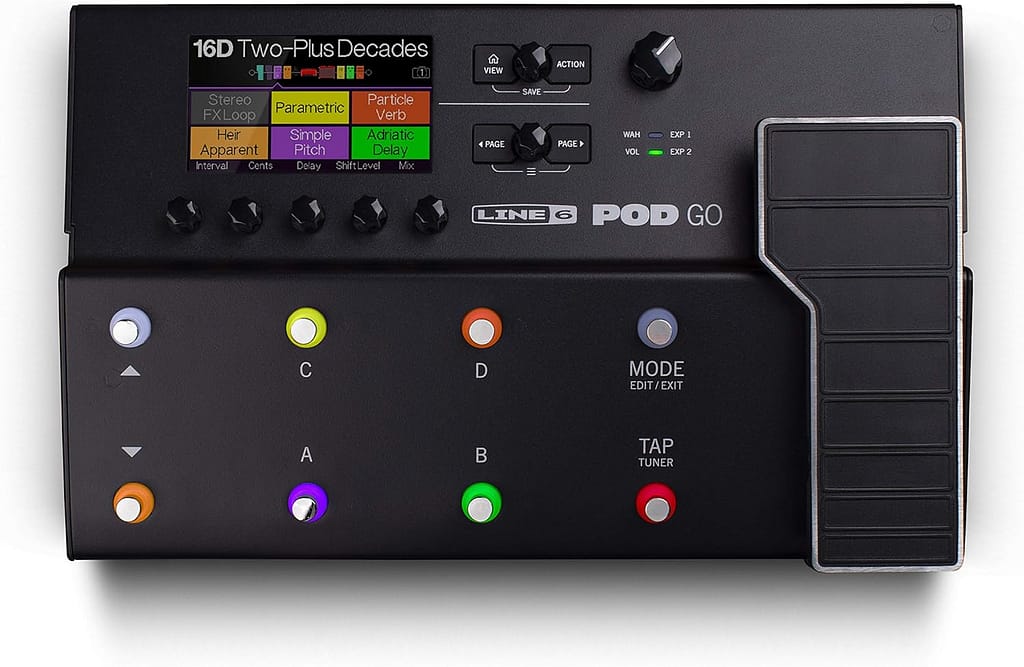Imagine the pure, uninterrupted sound of your guitar playing, free from any unwanted noise or hum that often sneaks into your performance. The Boss NS-1X Noise Suppressor Pedal is your gateway to achieving just that. This compact device not only enhances the clarity of your music by eliminating background noise, but it also comes equipped with intelligent features like three adjustable modes for threshold, decay, and damp, alongside knobs that give you total control over each parameter. What’s more, its suppression indicator, send/return loop, and DC out for powering additional pedals make it a versatile tool in your quest for flawless sound. Whether you’re laying down tracks in the studio or captivating an audience live, the Boss NS-1X ensures your guitar or bass sounds its best, making every note you play the star of the show.
Why Consider This Product?
If you’re a musician striving for that pristine, noise-free sound in your performance or recordings, the Boss NS-1X Noise Suppressor Pedal might just be the right pick for you. This innovative pedal employs cutting-edge technology to eliminate unwanted noise and hum without compromising your instrument’s natural tone. It’s a product that blends seamlessly with your setup, ensuring that your music hits the ears of your audience exactly how you intend it to.
The effectiveness of the Boss NS-1X is backed by rigorous research and development from one of the leaders in musical equipment. Musicians around the globe have found it to be an indispensable tool in their arsenal, lending credibility through their testimonials. Plus, its reliability is solidified with Boss’s reputation for producing durable, high-quality music accessories.
Features and Benefits
Cutting-edge Noise Suppression
The Boss NS-1X Noise Suppressor Pedal stands out with its sophisticated noise detection technology, which differentiates between the tonal components of your playing and the noise you want gone. This ensures a clean, clear output without affecting the dynamics of your performance.
Intuitive Controls
Equipped with Threshold, Decay, and Damp knobs, the Boss NS-1X offers you complete control over the suppression settings. This allows you to fine-tune the pedal according to your specific playing style and the unique characteristics of your instrument.
Versatile Connectivity
Thanks to its Send/Return loop, the Boss NS-1X can be integrated into any setup with ease, providing flexibility whether you’re playing live or recording in the studio. The DC Out further adds to this versatility, enabling you to power other pedals in your chain.
Robust Build Quality
Like all Boss products, the NS-1X is built to last. It’s housed in a sturdy, road-ready chassis that can withstand the rigors of touring, ensuring it will be a part of your gear for years to come.
Product Quality
The Boss NS-1X Noise Suppressor Pedal is designed with the durability and reliability you’ve come to expect from Boss. Its quality is evident in both its sound performance and its physical build, ready to endure the demands of constant use.
What It’s Used For
Live Performances
With its precise noise suppression, the Boss NS-1X ensures that your live sound is as clean and clear as possible, removing distractions so your audience can focus on your music.
Studio Recordings
In the studio, the NS-1X can be a godsend, eliminating background noise that can muddy recordings, ensuring your tracks sound professional and polished.
Versatile Playing Styles
Whether you’re shredding on an electric guitar or laying down bass grooves, the Boss NS-1X adapts to various playing styles thanks to its adjustable controls.
Enhancing Pedalboards
Adding the NS-1X to your pedalboard brings not only noise suppression but also helps in managing your pedal setup more efficiently with its power distribution capabilities.
Product Specifications
| Feature | Description |
|---|---|
| Type | Guitar/Bass Noise Suppression Pedal |
| Modes | 3 (Threshold, Decay, Damp) |
| Controls | Threshold, Decay, Damp Knobs |
| Connectivity | Send/Return Loop, DC Out |
| Build | Sturdy, road-ready chassis |
| Manufacturer | Boss |
Who Needs This
The Boss NS-1X Noise Suppressor Pedal is a must-have for guitarists and bassists looking to elevate the quality of their live and recorded sound by eliminating unwanted noise without affecting their instruments’ tone.
Pros and Cons
Pros
- Highly effective noise suppression
- User-friendly controls
- Versatile connectivity options
- Durable design
Cons
- May require some experimentation for optimal settings
- Price point may be higher than simpler models
FAQ’s
How does the noise suppression work?
The NS-1X analyzes your input signal and distinguishes between the sound of your playing and background noise, suppressing the latter.
Can it affect my guitar’s tone?
When properly adjusted, the NS-1X minimizes noise without altering your instrument’s natural sound.
Is it suitable for every style of music?
Yes, from metal to jazz, the NS-1X can be tailored to any playing style thanks to its adjustable settings.
What Customers Are Saying
Users rave about the transformative effect the Boss NS-1X has had on their sound, noting its exceptional suppression abilities and the clarity it brings to both live performances and recordings. Many highlight its user-friendly nature and the peace of mind its durability offers.
Overall Value
While the Boss NS-1X Noise Suppressor Pedal might represent a modest investment, its value lies in its ability to significantly uplift the quality of your sound, making it a worthwhile addition to any musician’s setup.
Tips and Tricks For Best Results
- Start with the threshold setting low and gradually increase it to find the sweet spot that eliminates noise without affecting your signal.
- Use the Send/Return loop to connect noisy pedals directly to the NS-1X for targeted suppression.
- Experiment with different settings in various playing contexts to fully appreciate its versatility.
Final Thoughts
Product Summary
The Boss NS-1X Noise Suppressor Pedal embodies the perfect blend of innovation, quality, and practicality. Its advanced noise suppression technology, teamed with user-friendly controls and robust build, make it an essential tool for any serious musician.
Final Recommendation
For those seeking to elevate their sound to professional levels by banishing unwanted noise without compromise, the Boss NS-1X comes highly recommended. Its benefits far outweigh its cost, promising to be a key component of your musical journey.
Disclosure: As an Amazon Associate, I earn from qualifying purchases.
